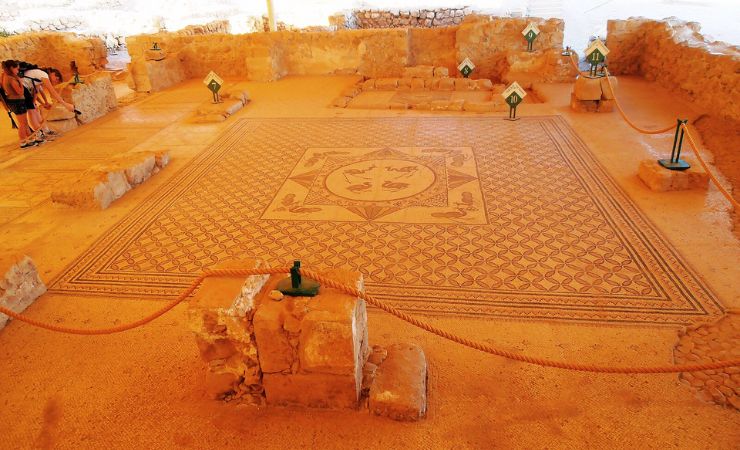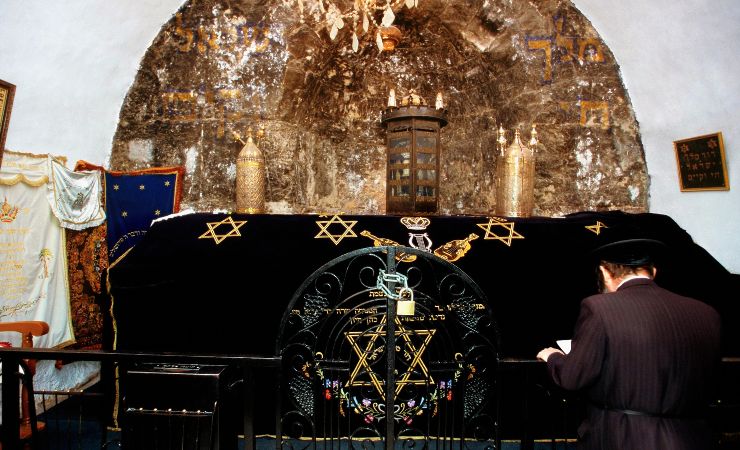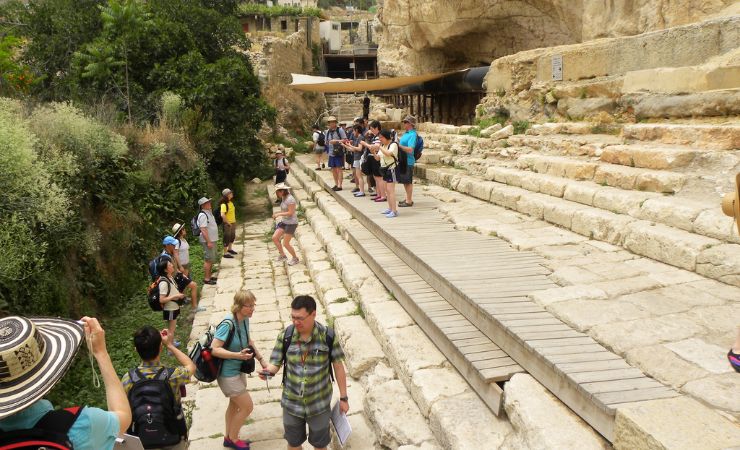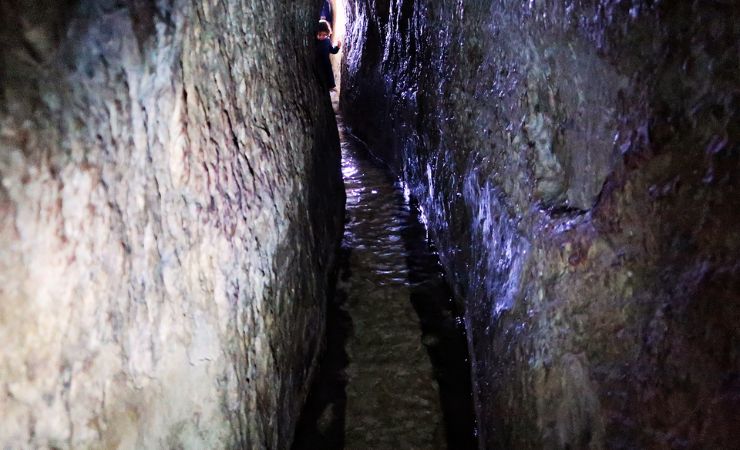Ein Gedi's Synagogue and Balsam Industry: The Story of Faith and Fragrance
Along the western shore of the Dead Sea in Ein Gedi, lies the remnants of an ancient synagogue know as the Ein Gedi Synagogue that offers a window into a vibrant Jewish community from more than 1,500 years ago.

Location
Ein Gedi is situated on the western shore of the Dead Sea, approximately 80 kilometers southeast of Jerusalem.
Biblical context
Ein Gedi is mentioned multiple times in the Bible. Notably, it is where David sought refuge from King Saul, hiding in the caves near the oasis (1 Samuel 24:1-2). The area is also referred to as Hazazon-tamar in 2 Chronicles 20:2.



Ein Gedi Synagogue Overview
The Ein Gedi synagogue was constructed during the late Roman period, around the 3rd century CE, serving as the spiritual and communal hub for the Jewish inhabitants of Ein Gedi. It remained in active use for approximately 300 years, throughout the Byzantine period, until its destruction in the early 6th century CE.
The synagogue, along with the surrounding settlement, was destroyed by fire in the early 6th century CE. The exact cause remains a subject of scholarly debate, with theories ranging from natural disasters to human conflict. Following this destruction, the site was abandoned, marking the end of a significant era for the Jewish community in Ein Gedi.
The Community and the Farsemon Perfume
The Jewish community of Ein Gedi was renowned for cultivating the balsam plant, known in Hebrew as “afarsimon.” This plant was the source of a highly prized perfume and medicinal balm, making Ein Gedi a center for its production. The production of balsam was not only an economic enterprise but also held cultural and religious importance, with the balm being used in sacred rituals and as a luxury item in ancient societies. The significance of this industry is underscored by a mosaic inscription found in the synagogue, which includes a curse upon anyone who would reveal the “secret of the town.” This is widely interpreted as a protective measure to safeguard the proprietary methods of balsam cultivation and production.
What Can Be Found at the Site
Unique Mosaic Floor
A beautifully preserved mosaic featuring geometric patterns, including a central eight-pointed star, adhering to Jewish aniconic traditions. It is a remarkable representation of the artistic skill and cultural values of its Jewish community during the Byzantine period. This intricate mosaic, primarily composed of geometric patterns, reflects a strict adherence to aniconism—the avoidance of figural imagery—in Jewish art of that era.
Design and Layout
- Geometric Patterns: The central area of the prayer hall features a rectangular mosaic carpet divided into three square panels, each adorned with alternating black and white tesserae. This design creates a visually striking effect, with some reddish stones interspersed, particularly in the northern panel’s border.
- Aniconic Motifs: Unlike other contemporary synagogues that incorporated zodiac motifs or biblical scenes, the Ein Gedi mosaic is devoid of figurative art. This suggests a community preference for non-figurative decoration, possibly influenced by local interpretations of the Second Commandment’s prohibition against graven images.
Inscriptions
The mosaic includes several inscriptions in Aramaic and Hebrew, offering insights into the community’s religious and social life:
- Genealogical List: One inscription lists biblical patriarchs from Adam to Japheth, emphasizing the community’s connection to its ancestral heritage.
- Zodiac and Months: Another inscription enumerates the zodiac signs alongside the corresponding Hebrew months, reflecting a synchronization of Jewish and regional calendrical systems.
- Donor Recognition: A dedicatory inscription honors community members who contributed to the synagogue’s maintenance, highlighting the value placed on communal support and piety.
- Community Conduct and Curse: A particularly striking inscription warns against behaviors such as causing disputes, slander, theft, and revealing the “secret of the town.” The latter is believed to refer to the proprietary methods of balsam production—a key economic activity in Ein Gedi. The inscription invokes divine retribution upon violators, underscoring the community’s commitment to ethical conduct and the protection of trade secrets
- Aramaic Inscriptions: Inscriptions listing biblical figures, zodiac signs, and months, along with a unique curse warning against revealing the “secret of the town,” believed to pertain to the balsam production methods.
“Cathedra of Moses” (Catedra do Moshe)
This stone seat, prominently located within the synagogue’s prayer hall, is believed to have served as the place of honor for the community’s chief rabbi or religious leader. It provides a tangible link to Jewish practices of the late Roman and Byzantine periods.
Objects Found at the Site
Discoveries include a bronze seven-branched menorah, a decorated bronze goblet, and a hoard of bronze coins, indicating the community’s wealth and craftsmanship. Additionally, a charred scroll found in the ark, later identified using advanced imaging techniques as containing text from the Book of Leviticus, dating to the 6th century CE.
Sources and Additional Information
Yosef Porath – The Synagogue at En-Gedi
The Inscription in the Ein Gedi Synagogue: The “Secret of the Town”
Nearby Sites
- Ein Gedi Nature Reserve: A haven of waterfalls, wildlife, and hiking trails amidst the desert landscape.
- Masada National Park: The ancient fortress atop a plateau, known for its historical significance and panoramic views.
- Qumran National Park: The site where the Dead Sea Scrolls were discovered, offering insights into ancient Jewish life.
- Qasr al-Yahud is believed to be where John the Baptist baptized Jesus.
- Lot’s Wife Pillar is a striking natural rock formation near the Dead Sea, traditionally linked to the biblical story of Lot’s wife, who turned into a pillar of salt for looking back at Sodom



